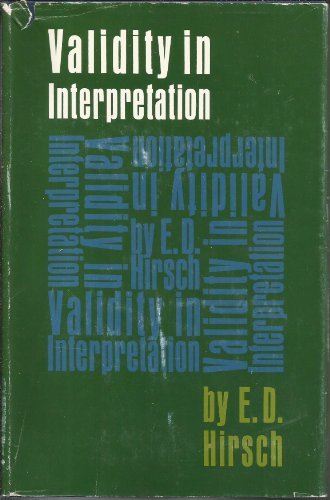What do you think?
Rate this book


301 pages, Hardcover
Published January 1, 1967
معنا متعلق به آگاهی است، نه متعلق به نشانهها یا چیزهای فیزیکی. آگاهی نیز، متعلق به اشخاص است و کسانی که در تفسیر متن دخالت دارند، مؤلف و خواننده هستند. معانیای که از سوی خواننده فهمیده میشود، یا مشترک با معانی موردنظر مؤلف است و یا تنها به خواننده تعلق دارد. اگرچه این نحوۀ بیان ممکن است توهینی باشد به حس بسیار ریشهدار و دیرین ما که زبان معانی مستقل را منتقل میکند، اما به هیچوجه قدرت زبان را مورد تردید قرار نمیدهد. برعکس در چنین نحوۀ بیان مسلم فرض میشود که هر معنایی که توسط متون منتقل میشود، تا حدودی محدود به زبان است و معنای متن نمیتواند فراتر از امکانات معنای و خارج از کنترل زبانی که این معنا در آن بیان میشود، منتقل گردد. آنچه تا اینجا انکار شده، این است که نشانههای زبانی میتوانند به طریقی خودشان معنا را ایجاد کنند – عقیدهای رازآلود که هرگز به طور مجاب کننده مورد دفاع قرار نگرفته است. ص 48